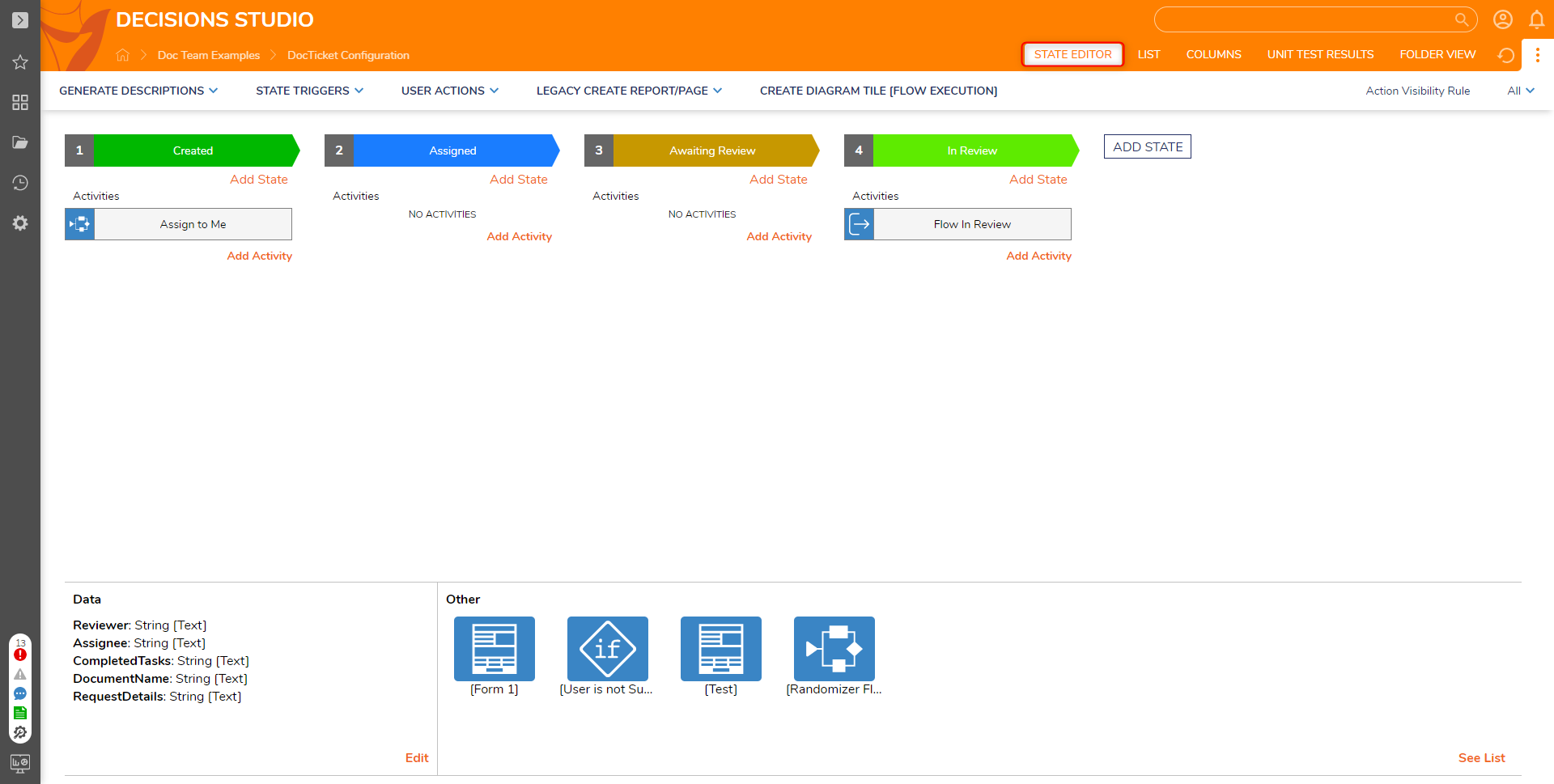Overview
The Configuration Folder is a Designer Folder behavior that allows users to create additional configurations on Data Structures. The types of configurations could be Entity Actions, Visibility Rules, and Access Patterns. The Data Structures that can use Configuration Folders are:
- Database Structures (must be enabled)
- Entities (Internal and External)
- Flow Execution Extensions
- Case Entities
Configuration Folder Action Bar
Configuration Folders can contain Actions. Users may configure actions to modify the data within the Data Structure and/or to better organize their data.
Certain Actions within the Configuration Folder Action Bar may/may not be present depending on its Data Structure. Below is a table stating every Action visible throughout each variation.
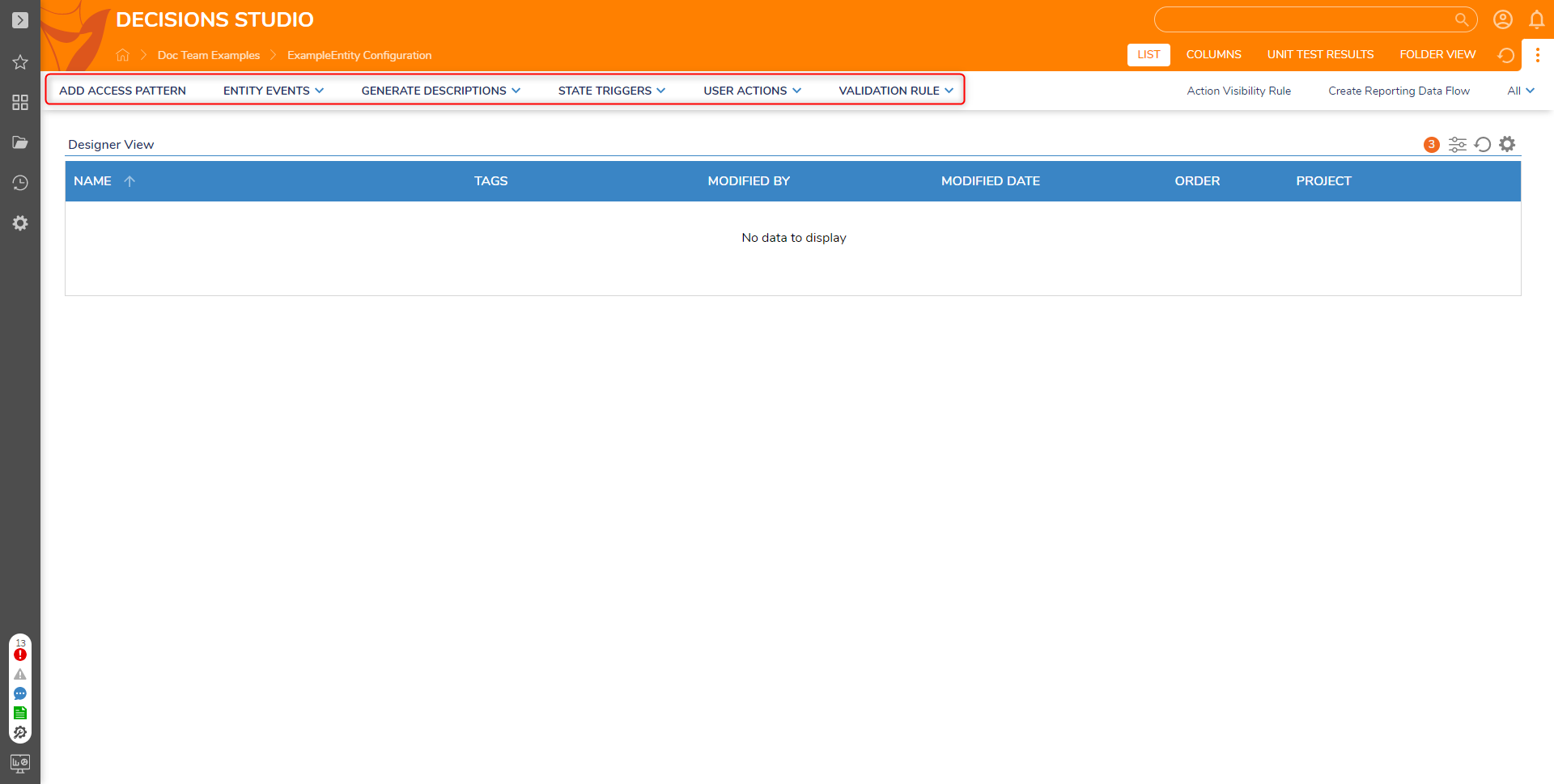
| Action Name | Supported Data Structures | Brief Description |
|---|---|---|
Add Access Pattern | Database Structures and Entities | Generates a custom step to retrieve data based on a criteria. |
| All supported Data Structures | Creates custom right-clickable user actions. | |
| Case Entities, Database Structures, and Entities | Allows for Rules to ensure created data is valid. | |
| Case Entities, Database Structures, and Entities | Flows created for notification on the deletion or creation of an Entity. | |
State Triggers | All supported Data Structures | Flows that run when an Entity enters a particular state. |
| Case Entities, Entities, and Flow Execution Extensions | A defined message description to generate from a Flow. | |
| All supported Data Structures | Rules created to hide user Entity actions. | |
Create Reporting Data Flow | Database Structures and Entities | Used to create Flows that can be used as report data sources. |
| Create Page | Case Entities | Create a variety of Pages for the Case Entity |
| Legacy Create Report/Page | Flow Execution Extensions | Create a Page for the Flow Execution Extension |
| Create Diagram Tile [Flow Execution] | Flow Execution Extensions | Create a Diagram Tile for the Flow Execution Extension |
Add Access Pattern
Add Access Patterns are similar to querying a database; a user may define a custom Fetch for the Entity. The Access Pattern retrieves a list of field results that fulfill user-specified criteria with search conditions such as Equals, Contains, Greater Than, Less Than, etc.
For example, if a user passes the default Fetch by Id, then the corresponding Entity will be returned.
To set up the Add Access Pattern:
- Select ADD ACCESS PATTERN from the Action Bar in a supported Data Structure.
- A dialog will display requesting the user to configure which fields to filter on and the step name. Access Pattern Configuration Restrictions
- Access step names cannot contain spaces or special characters. Use pascal or camel casing when naming access pattern steps.
- Access patterns can only be used with primitive types, such as Int32, String, DateTime, Decimals, and Boolean types. User composite types cannot have access patterns because they are serialized in the database.
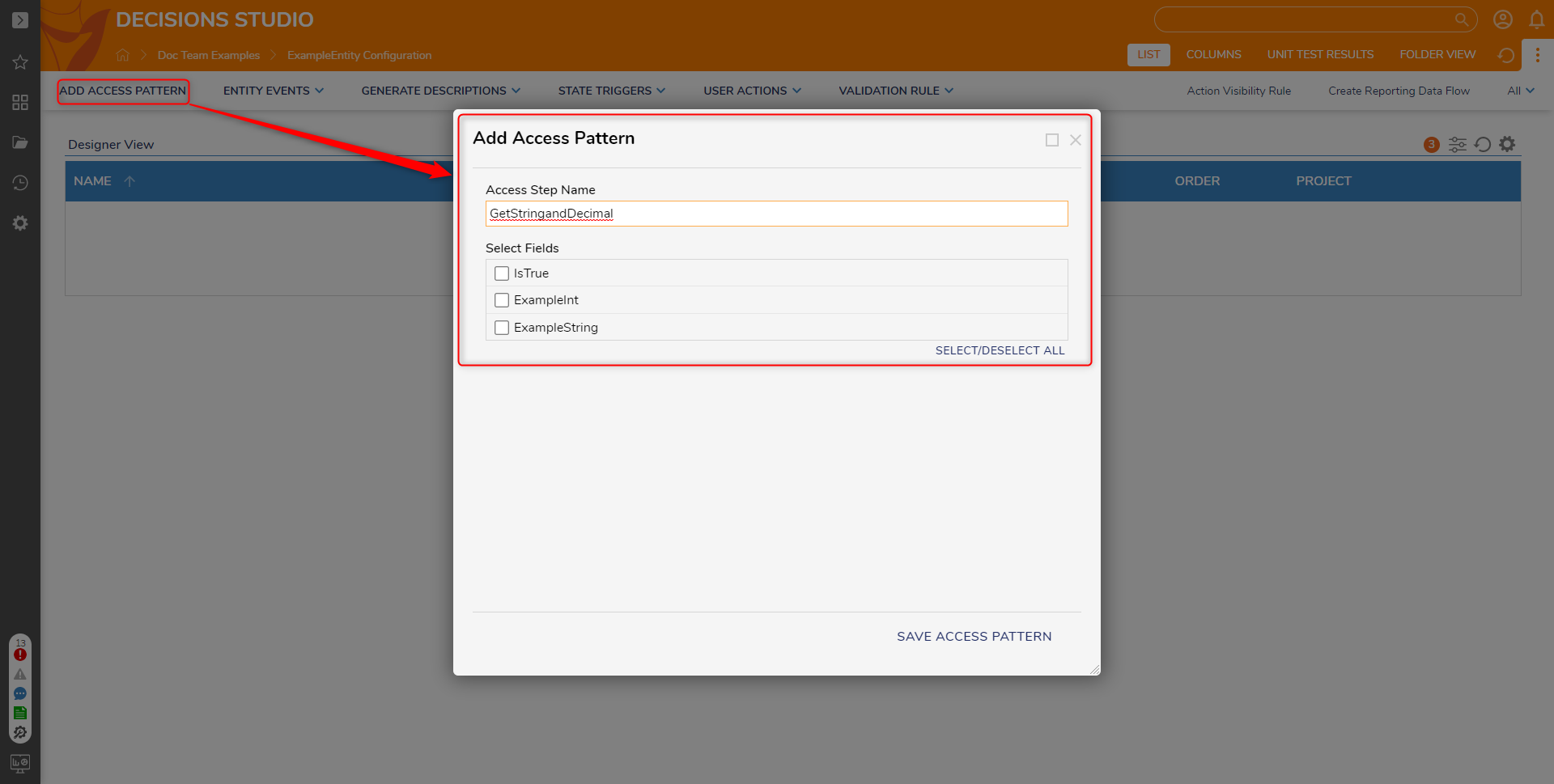
- After saving the Access Pattern, a new step is under User Defined Types > Data Structure Name. For this example, an Entity Data Structure was used.
- The Flow step now exists under User Defined Types > ExampleEntities.
- Inputs need to be configured to use Access Pattern steps.
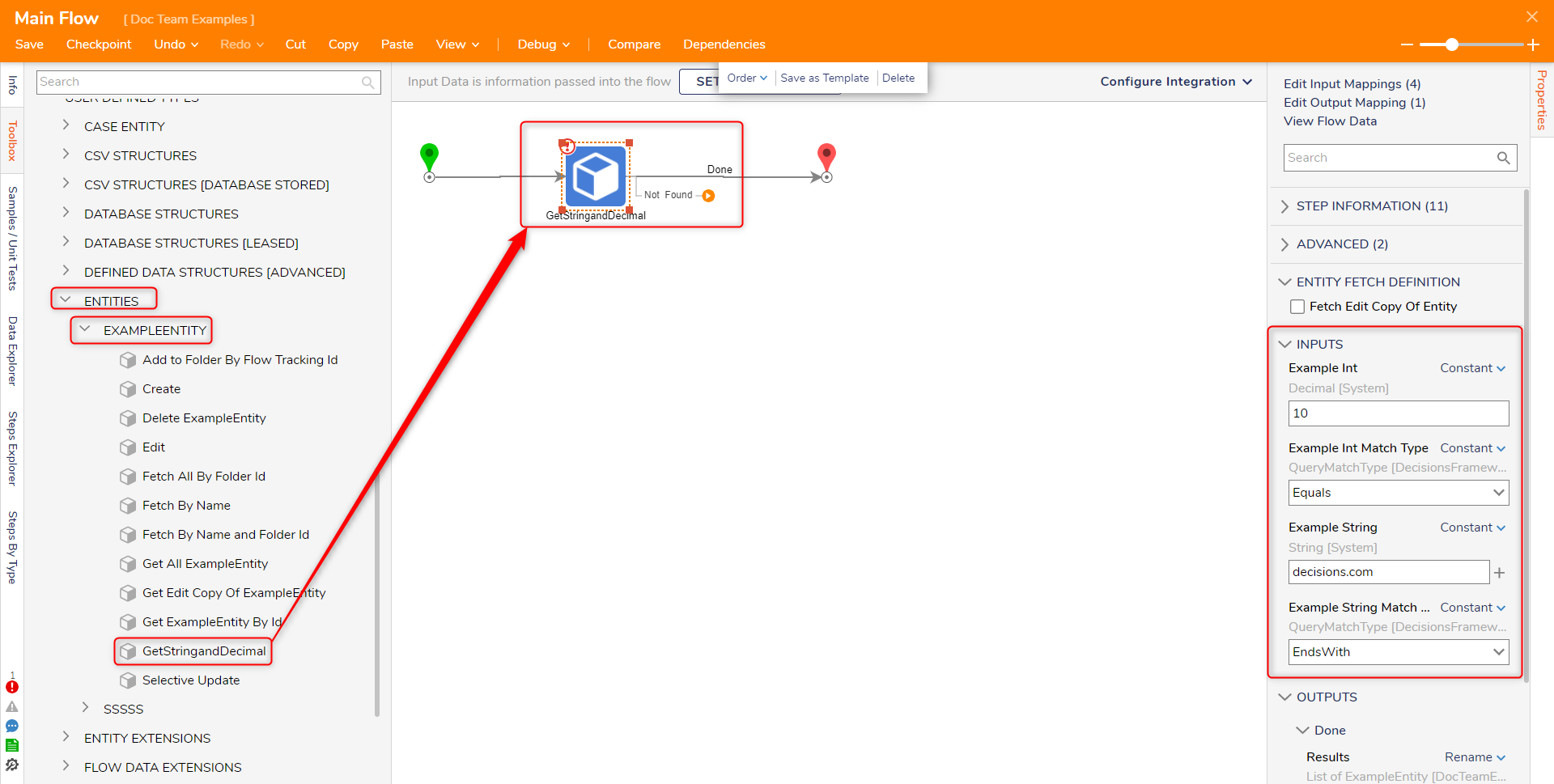
State Triggers
State Triggers are Flows auto-triggered when a specific state is in place. When something moves from one state to a specified state, a Flow can be triggered to run as soon as that application or assignment moves to a specific stage.
- Create Auto Trigger Flow: Runs a Flow when a specific state is in place.
- Use Shared Auto Trigger Flow: Runs a Flow that is used for multiple specified states.
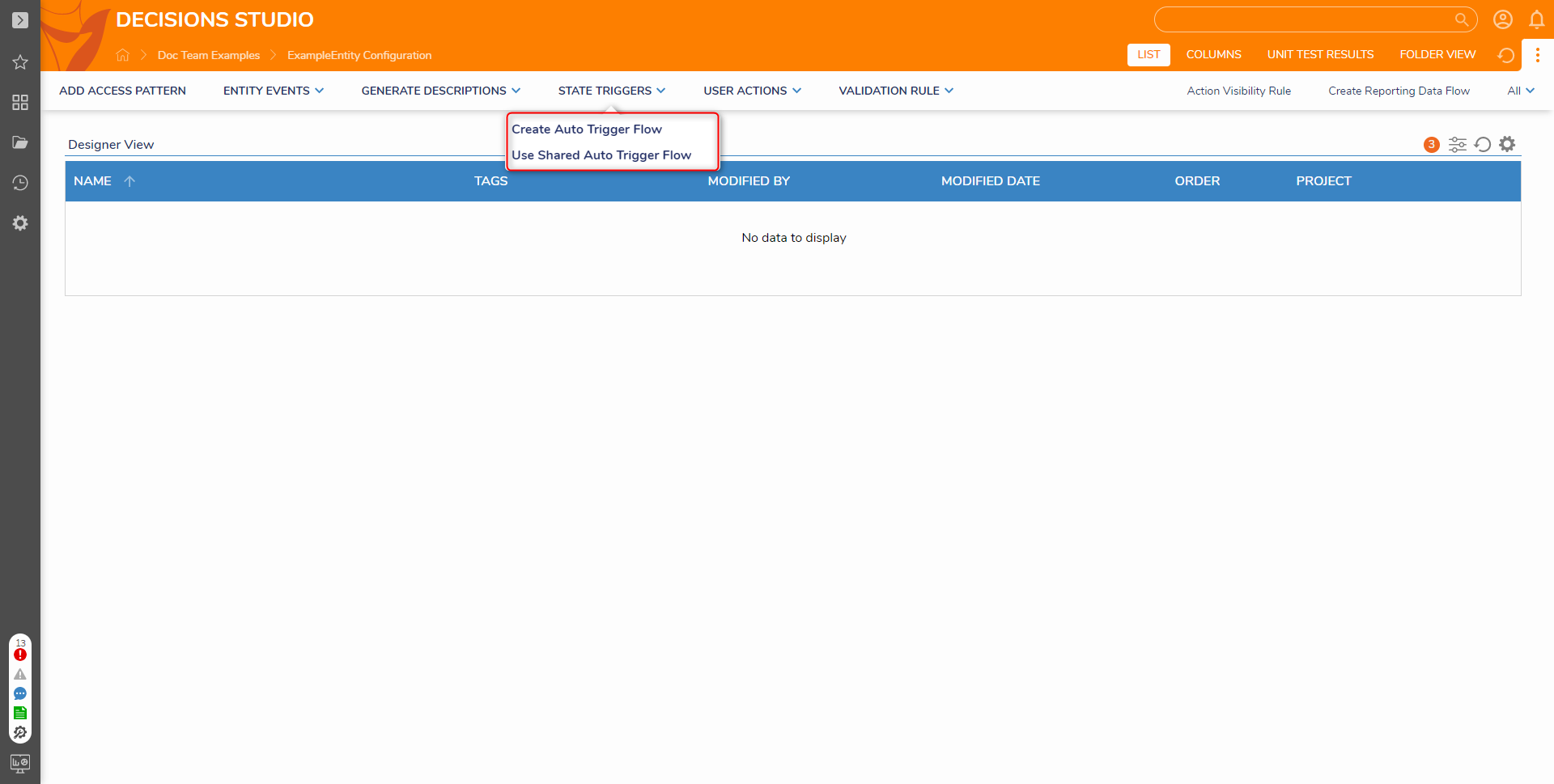
State Editor
This page is available for Flow Execution Extension data structures and provides the user a centralized location to view and manage states for this data structure, similar to how the Case Editor page functions for Case Entities.
